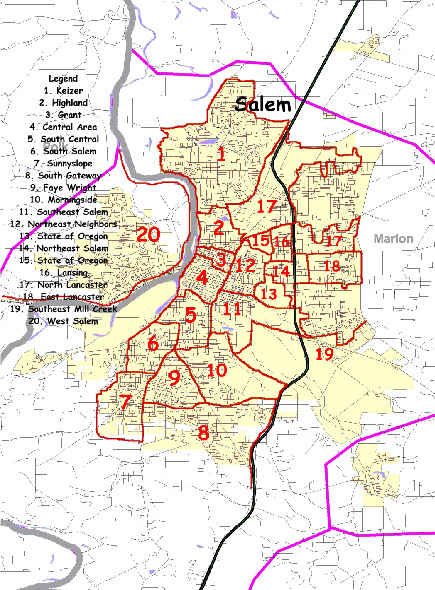Neighborhood Resource Unit (NRU)
Community Resource Units
Human Resource Units
Social Resource Units
Cultural Resource Units
Global Resource Units
Back to Human Geographic Mapping
An individually possessive perspective characterizes a Neighborhood Resource Unit. The individual identifies with "my house", "my street", "my neighbor", backyards and the local park. There is a high degree of familiarity with one's Neighborhood Unit and with the people who live there. An individual who is part of this culture may not know the name of every resident of the Unit, but does know generally the types of people who live there and their differences.
A Neighborhood Resource Unit is quite small. In urbanized areas it usually covers a few city blocks such as the neighborhoods of Salem, Oregon (see map below). Because of its closeness, the individuals' intensity of perception as to where his neighborhood boundary lies is clearly defined in his mind and strongly held.
In rural areas, small towns or villages may represent a Neighborhood Resource Unit. Outside of these small towns and villages NRU's may cover even larger geographic areas, encompassing neighboring farms or ranches where most frequent communication and interaction occurs.
Most residents travel outside their Neighborhood Resource Unit to their place of work, to do their shopping, and for most of their other day-to-day activities.
Neighborhood Resource Units physical characteristics include race, income, housing type, age, subdivision development etc., but they are not defined on this basis. Neighborhood Resource Units are defined through a social process on a very personal basis by those living within them.
Neighborhood Resource Units aggregate to form Community Resource Units in the Natural Borders mapping system.
Neighborhood Resource Units of Salem, Oregon

Cobalt Web Designs